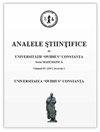A note on adaptivity in factorized approximate inverse preconditioning
IF 0.8
4区 数学
Q2 MATHEMATICS
Analele Stiintifice Ale Universitatii Ovidius Constanta-Seria Matematica
Pub Date : 2020-07-01
DOI:10.2478/auom-2020-0024
引用次数: 0
Abstract
Abstract The problem of solving large-scale systems of linear algebraic equations arises in a wide range of applications. In many cases the preconditioned iterative method is a method of choice. This paper deals with the approximate inverse preconditioning AINV/SAINV based on the incomplete generalized Gram–Schmidt process. This type of the approximate inverse preconditioning has been repeatedly used for matrix diagonalization in computation of electronic structures but approximating inverses is of an interest in parallel computations in general. Our approach uses adaptive dropping of the matrix entries with the control based on the computed intermediate quantities. Strategy has been introduced as a way to solve di cult application problems and it is motivated by recent theoretical results on the loss of orthogonality in the generalized Gram– Schmidt process. Nevertheless, there are more aspects of the approach that need to be better understood. The diagonal pivoting based on a rough estimation of condition numbers of leading principal submatrices can sometimes provide inefficient preconditioners. This short study proposes another type of pivoting, namely the pivoting that exploits incremental condition estimation based on monitoring both direct and inverse factors of the approximate factorization. Such pivoting remains rather cheap and it can provide in many cases more reliable preconditioner. Numerical examples from real-world problems, small enough to enable a full analysis, are used to illustrate the potential gains of the new approach.关于因式近似逆预处理的自适应问题
求解大型线性代数方程组的问题有着广泛的应用。在许多情况下,预条件迭代法是一种可选择的方法。本文研究了基于不完全广义Gram-Schmidt过程的近似逆预条件AINV/SAINV。这种类型的近似逆预条件在电子结构计算中的矩阵对角化中被反复使用,但在一般的并行计算中,近似逆是一个有趣的问题。我们的方法使用基于计算的中间量的控制自适应删除矩阵条目。策略是作为一种解决复杂应用问题的方法而引入的,它是由最近关于广义Gram - Schmidt过程中正交性损失的理论结果所激发的。然而,该方法还有更多方面需要更好地理解。基于前导主子矩阵条件数的粗略估计的对角旋转有时会提供低效的预调节器。这个简短的研究提出了另一种类型的pivot,即利用基于监测近似分解的正因子和逆因子的增量条件估计的pivot。这种旋转仍然相当便宜,并且在许多情况下可以提供更可靠的预调节器。来自现实世界的数值例子,小到足以进行全面的分析,用来说明新方法的潜在收益。
本文章由计算机程序翻译,如有差异,请以英文原文为准。
求助全文
约1分钟内获得全文
求助全文
来源期刊

Analele Stiintifice Ale Universitatii Ovidius Constanta-Seria Matematica
MATHEMATICS, APPLIED-MATHEMATICS
CiteScore
1.30
自引率
0.00%
发文量
15
审稿时长
6-12 weeks
期刊介绍:
This journal is founded by Mirela Stefanescu and Silviu Sburlan in 1993 and is devoted to pure and applied mathematics. Published by Faculty of Mathematics and Computer Science, Ovidius University, Constanta, Romania.
 求助内容:
求助内容: 应助结果提醒方式:
应助结果提醒方式:


